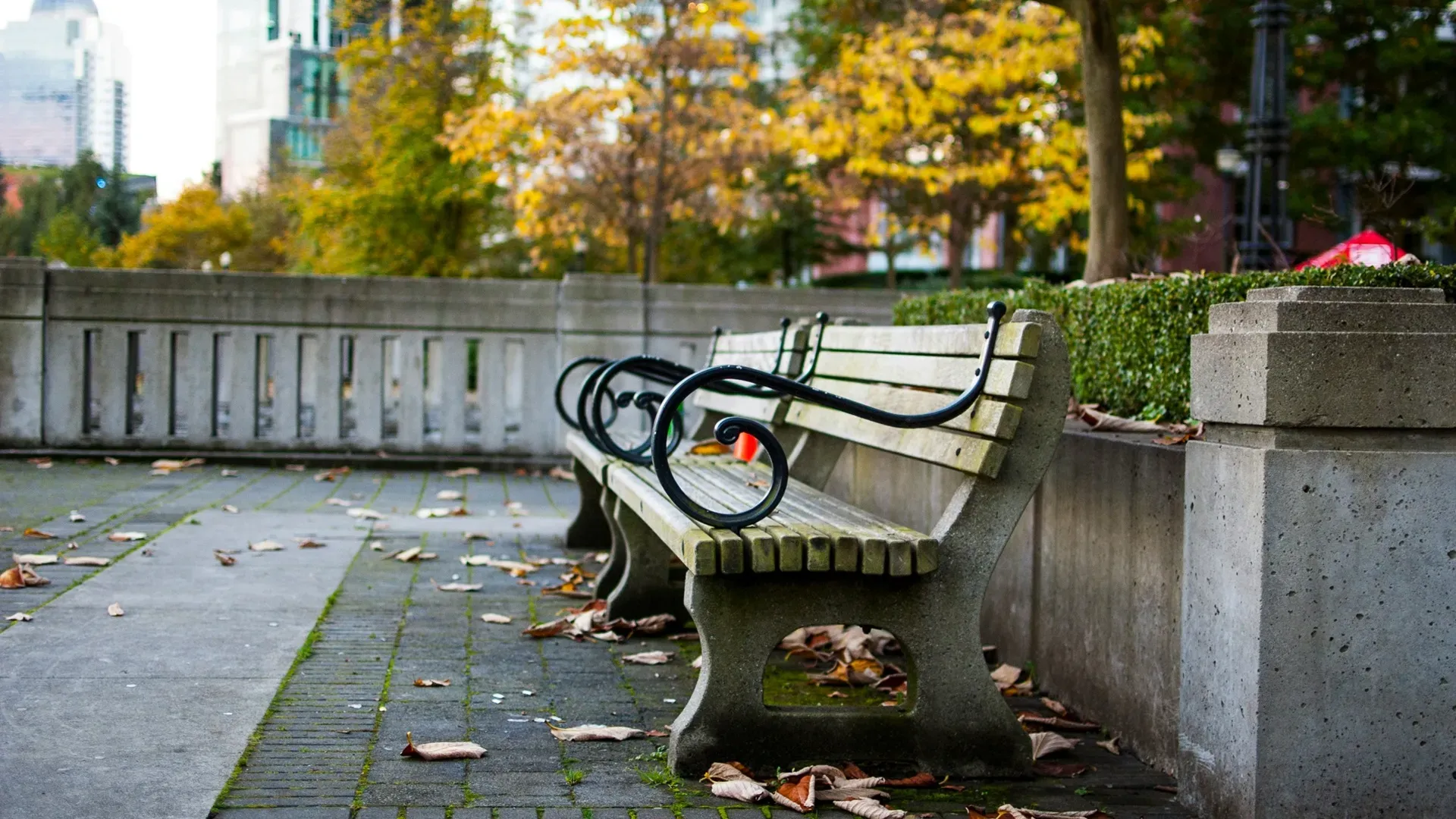Alcohol poisoning. Opioid crisis. Overdose. We are familiar with these hard topics making headlines. What’s less talked about are the individual people affected by addiction or living with substance use disorder day to day. Many of us have faced addiction ourselves, or have loved someone navigating addiction. In some communities, addiction is hidden; in others, it is highly visible. When it’s not addressed, addiction can override our choices and disrupt our families.
Without sensationalizing, how do we understand addiction and its very real impact on our communities and friends? We’ve assembled this guide in the hopes that it helps unpack the experience of — and science behind — addiction, as we all work to better support and care for each other.
Table of contents
What is addiction?

The term ‘addiction’ pops up often in daily conversation. “I’m just so addicted to reality TV, it’s such a guilty pleasure”; “I’m totally addicted to coffee, I can’t handle a morning without it”; “We are so addicted to our phones as a culture.” But while we use addiction as an easy shorthand for repetitive behaviour, the term holds real medical meaning.
The American Society of Addiction Medicine defines addiction as “a treatable, chronic medical disease involving complex interactions among brain circuits, genetics, the environment, and an individual’s life experiences. People with addiction use substances or engage in behaviours that become compulsive and often continue despite harmful consequences.”
While the scientific understanding of addiction is always growing, there are a few key indicators of addiction included in most definitions:
- Addiction is chronic and ongoing, and therefore a relapsing or repeating cycle.
- Addiction is driven by compulsion and the feeling of need toward the object of addiction, be it a substance or behaviour — despite harm caused to oneself or others.
- Achieving the object of one’s addiction results in a temporary chemical rush of neurological pleasure usually called euphoria.
- Over time, more of the object is required in order to obtain the same degree of resulting pleasure or euphoria.
Addiction is considered a neurological disorder which impacts the brain’s circuitry around rewards, stressors, and self-control (impulsivity control). - Addiction varies person to person.
In their guide designed for people experiencing addiction and their families, the Centre for Addiction and Mental Health uses the 4 C’s to describe the experience of addiction:
- Craving of substance or behaviour
- Loss of control of amount or frequency of use
- Compulsion to engage with substance or behaviour
- Engagement or use despite consequences
It is most helpful to define addiction as a mental or neurological illness at its core. Addiction happens at a complex intersection of people’s experiences, environment, and brain chemistry, and creates a behaviour loop that is deeply challenging to disrupt.
What’s the difference between addiction and substance use disorder?
In the broadest understanding of addiction, we know that people can become addicted in many ways, whether to a specific drug, a specific category of substances, or a behaviour like gambling.
Here at Union Gospel Mission, we’ve focused our care on supporting people who are navigating alcohol and drug addiction. People struggling with drug and alcohol addiction are identified by the 5th edition of the Diagnostic and Statistical Manual of Mental Disorders as suffering from substance use disorder, “a complex condition in which there is uncontrolled use of a substance despite harmful consequences.”
Not all addiction surfaces as substance use disorder, but you’ll hear us use these terms interchangeably because they are both relevant to the population we serve.
What does addiction look like in Canada?

An estimated 21% of Canadians, about 6 million people, will meet the criteria for addiction in their lifetime.
Alcohol is the most commonly used substance in Canada. The leading addictive substances and behaviours for Canadians include alcohol, cannabis, cocaine, gambling, methamphetamine, and opioids and prescription drugs.
The opioid epidemic continues across the country, with people overdosing due to the highly toxic drug supply. Unregulated drugs claimed the lives of at least 2,511 people in British Columbia in 2023, the largest number of drug-related deaths ever reported to The BC Coroners Service.
An estimated 225,000 people in BC use unregulated drugs; of those, 100,000 have an opioid disorder. Unregulated drug toxicity remains the leading cause of death in British Columbia for persons aged 10 to 59.
What this small sampling of statistics shows us is how widespread addiction is. It isn’t limited to any particular age group, racial demographic, or socio-economic bracket. With more than 1 in 5 Canadians experiencing addiction in their lifetimes, it quickly becomes apparent how essential it is that we have care, empathy, and understanding for people walking through a substance use disorder.
Learn more about the opioid epidemic affecting people in our communities.
What causes someone to struggle with addiction?

No one sets out to develop a substance use disorder. People’s motivations for taking drugs or alcohol vary: experimentation can arise out of a desire to increase good feelings, relieve stress, improve performance, or satisfy curiosity. At UGM, we often hear stories of individuals who started using a substance as a recreation, as a part of their family or friendship experience, or as a method for getting through a tough time. When they attempted to stop and couldn’t, or started losing important parts of their life, they suddenly realized that they were in the middle of a serious addiction.
The odds of developing an addiction vary from person to person. Studies have identified certain risk factors that contribute to someone’s likelihood of developing substance use disorder; these include physical and environmental factors like a chaotic homelife, community poverty, peer influence, early use, and existing mental illness. The more risk factors a person experiences, the higher their likelihood of drug experimentation leading to addiction. It’s important to note, however, that these risk factors are not determinants: no one’s destiny is fully decided by their circumstances.
A note about genetics: recent studies have identified certain genetic markers commonly inherited across addiction disorders, indicating that there is a genetic component to people’s likelihood of developing an addiction. That said, these statistics do not support stereotypes about the odds of certain people groups developing addiction. We raise this in an effort to highlight the harm caused to First Nations communities in British Columbia who have experienced the impact of unfounded stereotypes around alcoholism. Aside from their factual inaccuracy, these stereotypes ignore the impacts of intergenerational trauma and the intersection of multiple injustices. We hope to honour and dignify the Indigenous Peoples on whose land we work and serve.
It’s also important to recognize the impact of trauma in addiction. The circumstances leading to an initial intake of controlled substances are often deeply challenging. Chronic pain, housing insecurity, longstanding trauma, or social isolation can affect people across all backgrounds and can lead to an addiction. Trauma in childhood has been linked to addiction later in life, and many people turn to substances to self-medicate, to dull hurt, or to escape untenable experiences.
Some drugs have a more potent impact on our brain chemistry, leading to higher rates of addiction. Within weeks, the use of crack, cocaine, or heroin can be enough to damage the brain and initiate the physiological cycle of a substance use disorder. These drugs cause an initial euphoria that, in habitual users, can develop into painful withdrawal symptoms if another dose is not taken. This cycle is what makes continued interaction with a substance more likely, and with it, long-term dependency. As people’s tolerance for a substance increases, they require more of the drug to reach equilibrium, increasing their likelihood of neurological and physical injury and making it more difficult to engage the parts of the brain that allow one to interrupt that cycle.
Clearly, substance use impacts how the brain typically functions, but it can also lead to addiction because of how the brain typically functions. Our limbic system is the part of the brain that releases dopamine when we do something that aids in our survival — for example, exercising or eating. Dopamine is a feel-good chemical, upping our likelihood of repeating survival-positive behaviours. Most recreational drugs work on this system to boost the release of dopamine to up to 10 times the brain’s usual amount, resulting in a rush of positive feelings. Our brains respond to this flood of dopamine the same way it does to behaviours like eating and exercise — by wanting to repeat the experience.
While not all changes to brain chemistry experienced during addiction are permanent, some can be lasting, making recovery deeply challenging for many people who are working to change their behaviours.
Does addiction cause mental illness?

Because of the effects of controlled substances on the brain, it makes sense to wonder if there is a connection between addiction and mental illness. And yes, it is scientifically accurate to say that addiction can have a negative affect on mental health. As dopamine levels flatten after a session of substance-induced euphoria, for example, some people report feelings of depression and severe anxiety. Alcohol, a depressant, can cause depression-like symptoms after regular consumption. Toxic drug overdoses have been increasingly linked to brain injuries and mental illness.
But the relationship between addiction and mental illness is complex — and research has shown that rather than causing mental illness, addictions more often begin while people are navigating existing mental health challenges. One study revealed that “more than half of people with substance use disorder have also had mental health problems,” and CAMH notes that people with mental illness are twice as likely to have a substance use disorder than those without. People navigating mental illness sometimes turn to substances as a way to self-medicate and find relief from their symptoms.
When it comes to understanding addiction’s interplay with mental illness, it’s key to begin with compassion, and the knowledge that it’s more likely that someone’s mental health hurdles led them into substance use disorder than the other way around.
What does addiction feel like?

Here at UGM, we have the privilege of holding space for many people who are experiencing addiction, or have in the past. There are some similarities in their stories — and also many differences. There are many misconceptions and assumptions about addiction and substance use disorders, none of which are helpful to actually understanding someone’s true experience and whole story as a human being. This is why our practices involve leaning in with curiosity and letting people share their stories, when and where they are comfortable doing so, without judgement or assumption: we know everyone is their own person with their own story.
Our understanding of addiction is informed by the work of Dr. Bruce K. Alexander, who identified addiction not as a moral failure, but a response to pain, dysregulation, and an inability to cope, fueled by a lack of connection to purpose, spirituality, others, and ourselves. In our conversations with members of the recovery community, we’ve heard that people sometimes feel a sense of relief when they first engage with controlled substances like alcohol or drugs: shy people are sometimes emboldened, and people living with trauma often experience an escape or the ability to temporarily regulate.
It’s when a substance habit becomes an addiction that people report feelings of stress and lack of control. They speak of the frustrations and difficulties of holding onto possessions while living in addiction, whether because they sold their belongings to support their substance habit or had their things stolen by friends also in addiction. Some community members lost their jobs, while others lost contact with their families. Aurel recalls feelings of deep shame and loneliness, while Ed describes his addiction as a gradual journey into isolation: “Addiction is social at first, but then all of the sudden, you’re sort of imploding. You push all your family, all your friends out. You’re just stuck with yourself.”

Substance use disorder can lead people into unsafe situations. Kristy got into a relationship with a man who was hiding his addiction, and their shared drug use led to violent outbursts, instability, and eventual homelessness. Luis was introduced to drugs by his friends in his early teens, and his thefts to support his addiction led to his arrest and deportation from the United States. Fear, anxiety, paranoia, and despair can all be components of the experience of addiction.
While all of these community members are experiencing new seasons of health and stability now, their stories highlight how disruptive addiction can be. There is no one universal experience of addiction, but the more we can extend compassion to others, the more available we make belonging and healing.
Read more of Ed’s story of recovery in our recent Annual Report.
Can addiction be cured?

Addiction can be overcome. We see this in our recovery programs at UGM, and that’s why we continue to offer hope when people seek our services for help with their substance use disorder.
We also know that for people who have experienced addiction, the pull of their chosen substances may never truly go away. People in recovery take a lifelong approach to their healing: it takes continued intention, engagement in community, and healthy coping skills to maintain a sobriety journey.
The Path to Treatment
The treatment of addiction is not simple, because the problems treatment addresses are not simple. There is no one-size-fits-all treatment, nor any silver-bullet solution to preventing substance use disorder. There are, however, different steps along the way that people may choose as they find the change that works for them.
Withdrawal management or “detox” is an important step for individuals who want to stop using all substances right away. Withdrawal is marked by physical and psychological distress as the body adjusts to being without addictive substances, and can be medically unsafe if not supervised. There are services throughout BC that provide this care. On its own, withdrawal management will not be able to treat underlying reasons for an addiction, but it can be an essential first step.
Day treatments can either help provide someone an introduction to recovery for those who have barriers to entering a full-time residential recovery program, or they can provide support to those who can’t leave behind housing, children, or supports within their community that are essential for a live-in recovery program.
Medications can be a useful part of recovery from an addiction. Many people are used to the idea of nicotine patches for someone looking to quit smoking; a similar support exists for opioid use called opioid replacement therapies. These can often be life-saving due to the significant danger of overdose if someone relapses into using unregulated opioids.
Recovery programming is, traditionally, a longer form of addiction care. Varying in approach from Twelve-Step programming to SMART Recovery, recovery programs aim to help people develop new habits and address the behaviours underlying their addiction. UGM provides Men’s and Women’s Recovery Programs that focus on holistic care of the whole individual, supporting people via housing, counselling, group sessions, spiritual support, coaching, referrals to community supports, and other in-house services. While not the only method for recovery, this kind of programming is an essential way many find their way into new patterns of flourishing. Our focus is on recovery, because of our belief that people can find freedom and relief from the addictions that are disrupting their lives.
Culturally and spiritually appropriate supports can be an essential part of someone’s recovery as well. Finding connection to core values and community within culture and spirituality contributes to overall health and ability to overcome addiction.
Addiction Prevention
Just as substance abuse disorders develop from an intricate blend of genetic predispositions and environmental factors, the same seems to be true for the opposite factors, called protective. Protective factors can be very powerful in balancing out the internal and external risk factors someone might experience. Protective factors can include caring supervision, living in a well-resourced neighbourhood, and positive relationships with guardians, friends, and — crucially — with oneself. Believing in oneself and having hope for the future plays an integral part in preventing addiction, as it promotes the ability to imagine alternatives to what may seem like the only way to feel relief from present circumstances.
Leading with compassion
We will all, at some point in our lives, need help, and people living with addiction are no exception. From intentional recovery programming to preventative care, there is much we can do to support our neighbours and loved ones as they journey through substance dependence and into greater well-being. By reading stories of transformation, investing in our communities, and extending kindness, we can sow seeds of hope.
If you or someone you love are considering entering recovery, please reach out at ugm.ca/get-help.
Sources and further reading:
- What is the Definition of Addiction?
- Drug Misuse and Addiction | National Institute on Drug Abuse (NIDA)
- What is addiction? - Harvard Health
- Psychiatry.org - What Is a Substance Use Disorder?
- Addiction: An information guide - CAMH
- Fundamentals of Addiction: Key Concepts in Addiction | CAMH
- Statistics on Addiction in Canada | Calgary Dream Centre
- Substance use and addiction
- How Addiction Works: Exploring Substance Use Disorders
- Fundamentals of Addiction: Identifying Concurrent Disorders | CAMH
- Mental Illness and Addiction: Facts and Statistics | CAMH
- Treatment, Support and Recovery | Canadian Centre on Substance Use and Addiction
- The Twelve Steps | Alcoholics Anonymous
- Recovery services and treatment support - Province of British Columbia
- About substance use - Canada.ca


